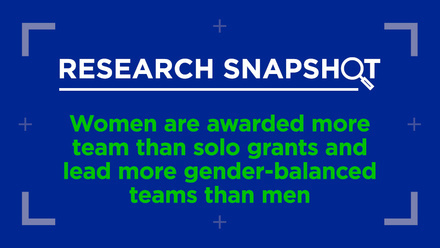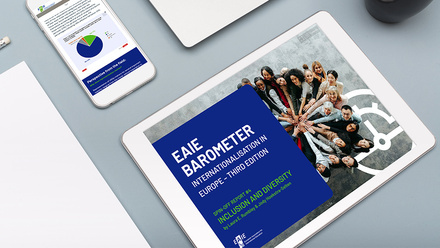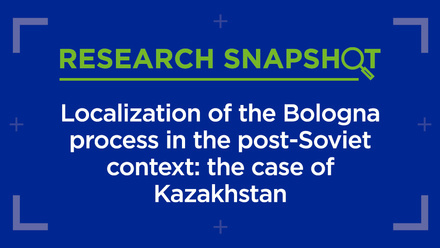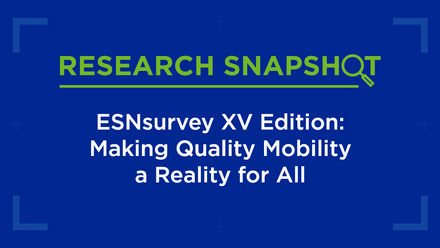European specificities: reflections from the 6th IAU Global Survey

In 2023 the International Association of Universities (IAU) conducted the 6th edition of its Global Survey on the Internationalization of Higher Education. Since its creation in 2003, this periodic survey has provided a comprehensive analysis at the global and regional levels of the major trends in internationalisation. As a result, IAU global surveys have become an invaluable resource for those working in internationalisation and global higher education studies.
The survey
The 6th IAU global survey was conducted five years after the 5th edition. This period is sufficient to identify and follow changes taking place, as well as to allow for meaningful comparisons over time. Conversely, further postponement of the survey risked changes being too great to allow for insightful comparison.
The 6th IAU Global Survey is a collaborative effort undertaken by the IAU and various partners. Data was collected between January and June 2023 through an online questionnaire in three languages (English, French and Spanish). As the survey was institutional in nature, higher education institutions (HEIs) were asked to carry out internal consultation before submitting a single reply. This was to ensure that replies to the IAU Global Survey represented an institutional perspective and not a personal point of view.
The survey collected results from over 110 countries and territories. However, the 722 responses indicate a disproportionate distribution of responses across regions relative to the number of institutions in each region, according to the IAU WHED. This implies that some regions had a higher or lower response rate than expected, resulting in potential biases in the survey. Notably, the European region replied the most, contributing 39% of all replies.
Key findings for Europe
For the majority of subjects covered by the survey, answers from European HEIs do not diverge substantially from those of other regions of the world, but there are some subjects where a clear European specificity can be seen.
One such area is institutional risks associated with internationalisation. In Europe, a clear institutional risk ("increased workload for academic and administrative staff") emerges as the most heavily cited response. The identification of such a risk might signal the fact that internationalisation at European HEIs has become widespread and the number of activities has increased, but at the same time, the human resources dedicated to internationalisation has not similarly grown. This interpretation is supported by the fact that Europe has the highest percentage of HEIs indicating the presence of a policy/strategy for internationalisation, highlighting a strong engagement in internationalisation.
On this subject of policy/strategy for internationalisation, another interesting European specificity emerges: only in Europe is the involvement of students (student organisations and/or student representatives) in the design, evaluation and implementation of the policy/strategy/plan present at the majority of HEIs. The involvement of students may be considered a good practice that HEIs in other regions of the world may wish to implement.
Another notable finding is that globally, HEIs consider Europe to be the most significant region for internationalisation. Specifically, 75% of respondents rated Europe as "very important" in terms of geographic priorities. Interestingly, this sentiment is shared not only by HEIs within Europe but also by those in Sub-Saharan Africa, in North Africa and the Middle East. This suggests a growing trend of regionalisation within Europe, which aligns with various initiatives from both the European Union and European governments. Examples include the European Education Area, programmes like Horizon 2030, Erasmus+ and the European Universities Initiative, as well as initiatives from (and between) European governments themselves, such as the European Higher Education Area.
The important role of the European Union and national governments is also reflected in funding for international research. In fact, in Europe, grants from national governmental agencies and grants from international organisations/foreign funding governmental agencies are the two main sources of funding for international research, putting European HEIs in a somewhat privileged position compared to all other regions (except North America) that must heavily rely upon institutional resources to conduct international research.
Adversely, Europe, closely followed by North America, is the region in which the majority of HEIs report being impacted by changes in political relations between countries concerning the internationalisation of research. In Europe some HEIs were required by their national governments to revise their research partnerships in all or select disciplines with institutions in certain countries because of newly introduced governmental rules and regulations. HEIs in some European countries were also required to completely suspend research partnerships with institutions in some countries because of such governmental rules and regulations. This trend raises concerns about increased government intervention in how HEIs conduct their international research and specifically in determining which institutions in which countries they collaborate with. Such heightened government intervention could potentially diminish institutional autonomy and foster a form of research isolationism.
Nonetheless, Europe stands out as the region with the highest percentage of institutions that have adopted policies and measures for refugees and migrants. The prevailing strategies implemented include providing direct assistance to refugee and migrant students, as well as academic and administrative staff, offering tailored support services for refugees and migrants, and establishing scholarships and grants aimed at aiding refugee students, academic staff and administrative personnel.
Finally, it is worth mentioning that Europe is not a uniform region: there is diversity within the region, which is exemplified by the great degree of variability within survey results from the European region. One such example is the fact that no clear common future priority for internationalisation emerges among European HEIs.
Conclusion
The 6th IAU global survey paints an interesting picture of internationalisation in Europe, where areas of alignment of the internationalisation process and concurrent diversity inside the region are both highlighted. For certain aspects, Europe is the leading region of the world in internationalisation, but European HEIs also face specific challenges that must be addressed in order for internationalisation to continue to be successful.
This blog has summarised some of the key high-level takeaways related to the European higher education sector. The full report of the 6th IAU Global Survey on Internationalization is freely downloadable from the IAU website here.






